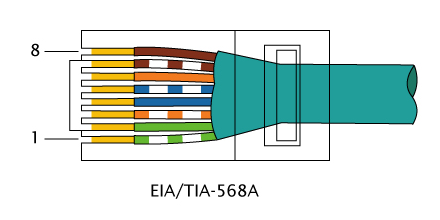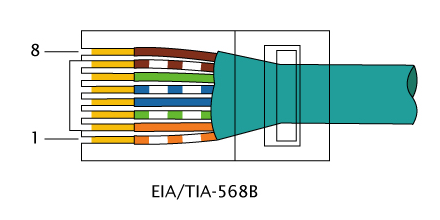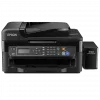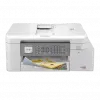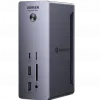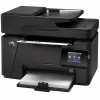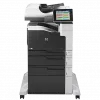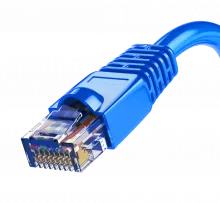
The 8P8C (8 Position 8 Contact, also acronym as 8 position 8 conductor; often called RJ45) is a modular connector commonly used to terminate twisted pair and multiconductor flat cable. These connectors are commonly used for Ethernet over twisted pair, registered jacks and other telephone applications, RS-232 serial using the EIA/TIA 561 and Yost standards, and other applications involving unshielded twisted pair, shielded twisted pair, and multi-conductor flat cable.
"RJ45" naming confusion
RJ45 was originally a telephone-only standard. It is one of the many registered jacks, like RJ11, another telephone standard. As a registered jack, telephone RJ45 specifies the physical male and female connectors as well as the pin assignments of the wires in a telephone cable. The original RJ45 uses a special keyed 8P2C modular connector, with Pins 5 and 4 wired for tip and ring of a single telephone line and Pins 7 and 8 connected to a programming resistor. It is meant to be used with a high speed modem, and is obsolete today.
Wiring
